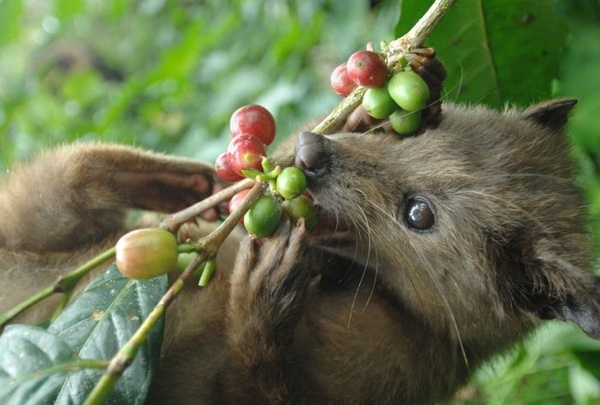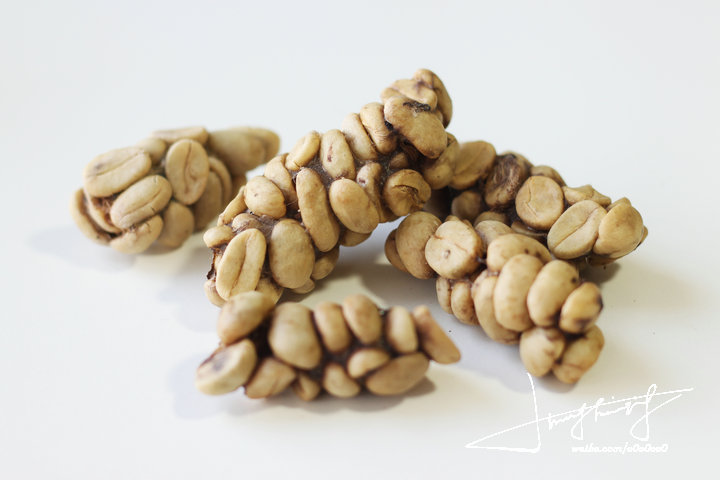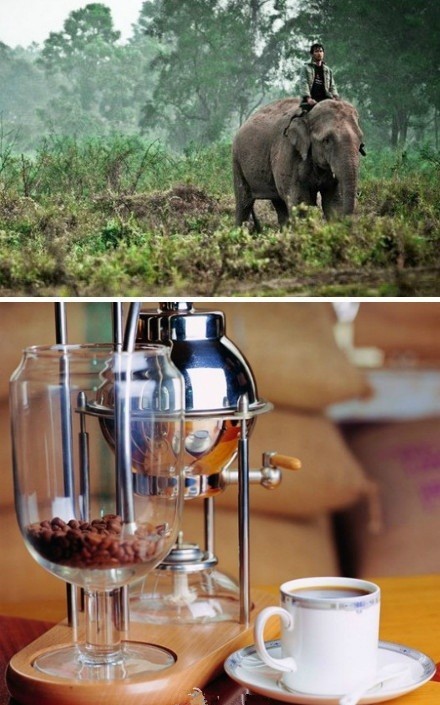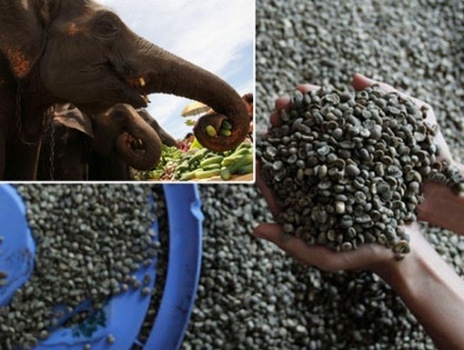Like the difference between shit coffee and Kopi Luwak
Recently, like shit coffee is so hot that every major Weibo has released and reprinted it, which instantly took away the title of "the most expensive coffee" of Kopi Luwak. But it doesn't make sense to think about it.
Elephant food mainly consists of tender branches and leaves, wild fruits, weeds, tender bamboos, wild vegetables and other plants. It probably likes coffee fruit, too. (much better than grass) but elephants must not go to the coffee garden, so if elephants can eat coffee, they are basically fed.
First, let's take a look at what's going on with civet coffee. The process is as follows.
1. Civets like to eat red coffee fruits that are ripe on coffee trees.
2. Manually pick out undigested coffee seeds from cat droppings
3. Remove the silver gray film of coffee seeds, wash them with water and dry them in the sun.
4. Roast coffee and raw beans.

There is a point here is that the civet is a guy who takes coffee fruit as the main meal, and it has its own unique method of selecting coffee fruit, so the beans he picks out are basically good beans, which people can't replace. So the method of feeding elephants coffee fruit is really weak!

In the picture above, the outer layer of coffee beans is wrapped in a seed coat, which makes the cat's stomach indigestible. The production process will first wash and remove the seed shell, and then the coffee beans inside, so in fact, the coffee beans we drink are not in direct contact with poop, and then baked at a high temperature. So the Kopi Luwak is still very clean!
But elephant shit is actually artificially fed, so there is no guarantee that beans are good or bad. Hype, gimmicks!


With regard to "shit coffee", I always have reservations.
Kopi Luwak is also being misinterpreted. Wild civets are supposed to be kept in captivity and artificially fed with coffee fruits, so

Good coffee is understood differently in everyone's mind.
Everyone knows that Blue Mountain Coffee is good, but I would like to ask you, do you really often drink black coffee? Do you really know anything about Blue Mountain Coffee? A good understanding of Blue Mountain Coffee must be based on the premise that you have had all kinds of black coffee, otherwise a cup of Blue Mountain is really not as good as a cup of milk.
Important Notice :
前街咖啡 FrontStreet Coffee has moved to new addredd:
FrontStreet Coffee Address: 315,Donghua East Road,GuangZhou
Tel:020 38364473
- Prev

Fancy coffee frothing tips
When filling the steam, be sure to open the steam volume at one time, so that the steam can blow the milk inside the milk tank to form a vortex inside the milk tank. Control the temperature of milk, why say milk temperature is too high to make the effect of milk foam is not good, this is because there is a kind of gum in milk, this colloid is dissolved at low temperature, and affected by temperature, this colloid will produce coagulation, will change from sol state to sol state.
- Next

Major Coffee producing areas in the World (1)
Coffee production zones (commonly known as coffee belts) range from 25 degrees north latitude to 30 degrees south latitude, covering many countries in Central, West Africa, the Middle East and South Asia, the Pacific, Latin America and the Caribbean. The reason why coffee cultivation is concentrated in this area is mainly due to the limitation of temperature. Because coffee trees are vulnerable to frost, neither north nor south latitude is suitable, especially in the tropics.
Related
- Beginners will see the "Coffee pull flower" guide!
- What is the difference between ice blog purified milk and ordinary milk coffee?
- Why is the Philippines the largest producer of crops in Liberia?
- For coffee extraction, should the fine powder be retained?
- How does extracted espresso fill pressed powder? How much strength does it take to press the powder?
- How to make jasmine cold extract coffee? Is the jasmine + latte good?
- Will this little toy really make the coffee taste better? How does Lily Drip affect coffee extraction?
- Will the action of slapping the filter cup also affect coffee extraction?
- What's the difference between powder-to-water ratio and powder-to-liquid ratio?
- What is the Ethiopian local species? What does it have to do with Heirloom native species?

